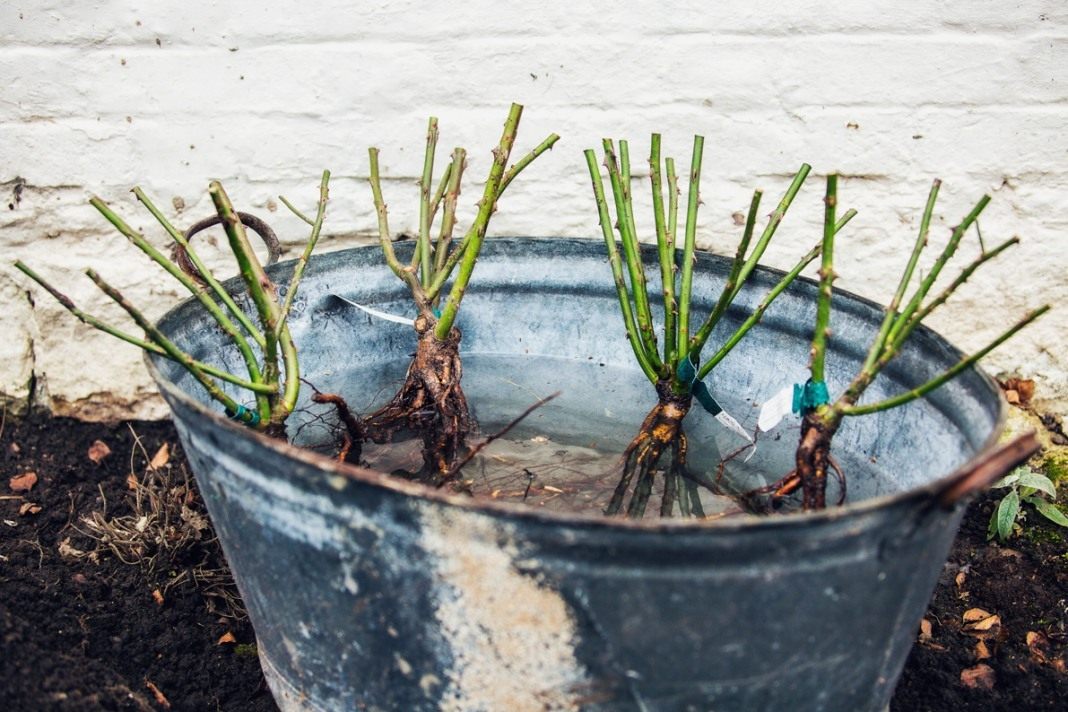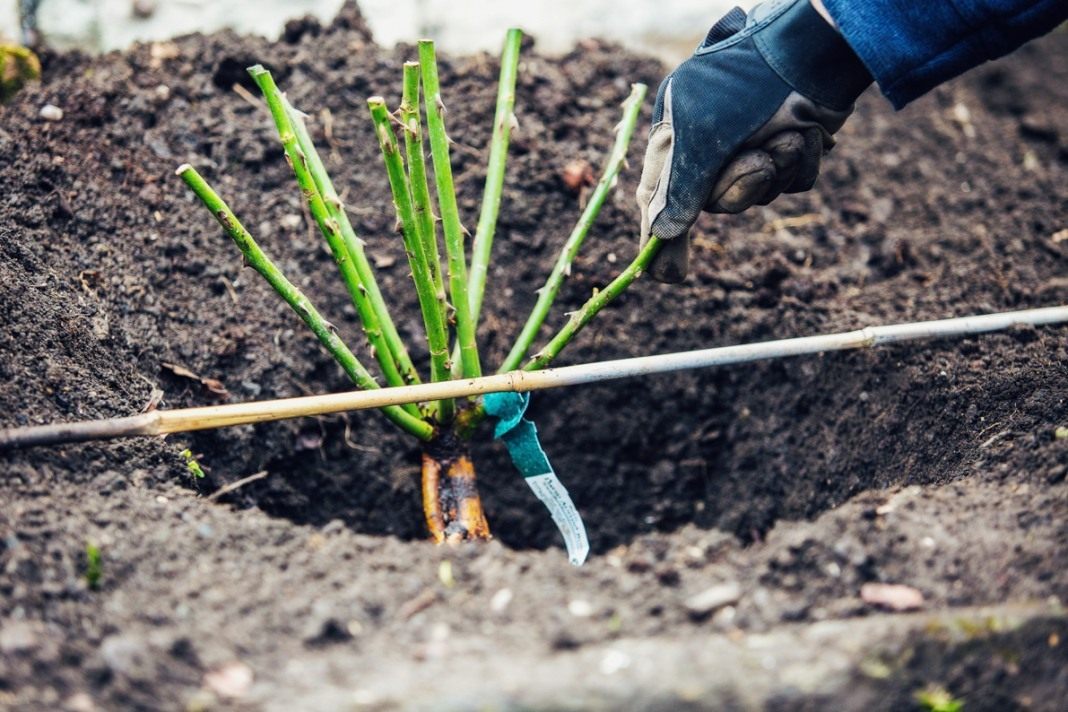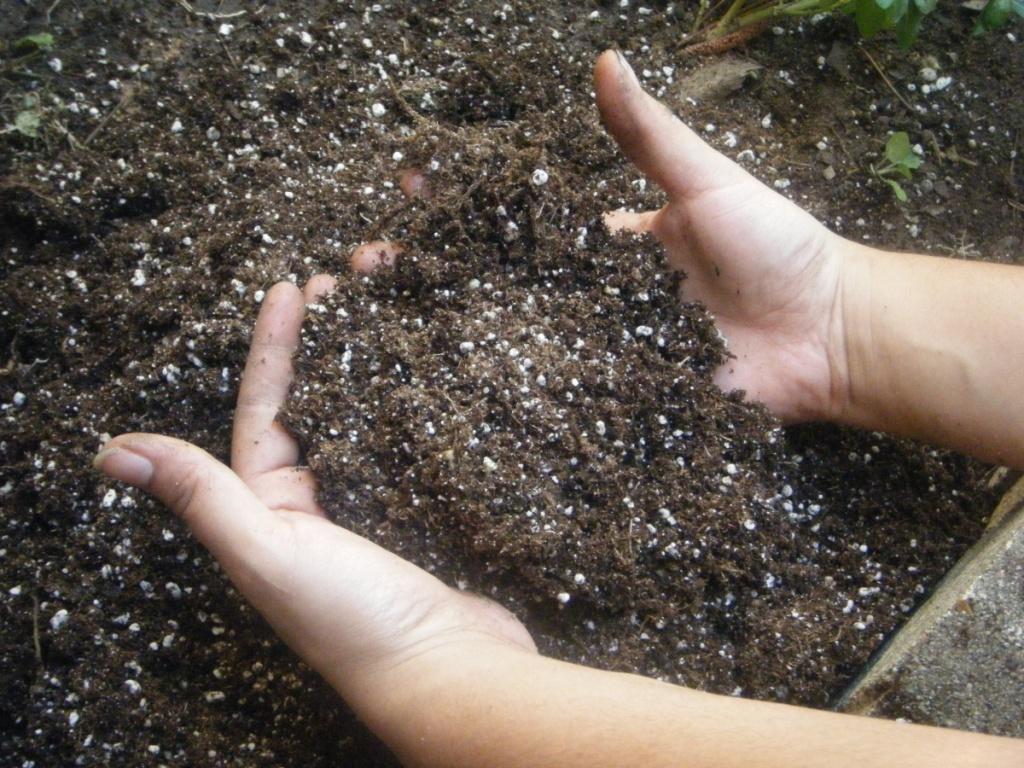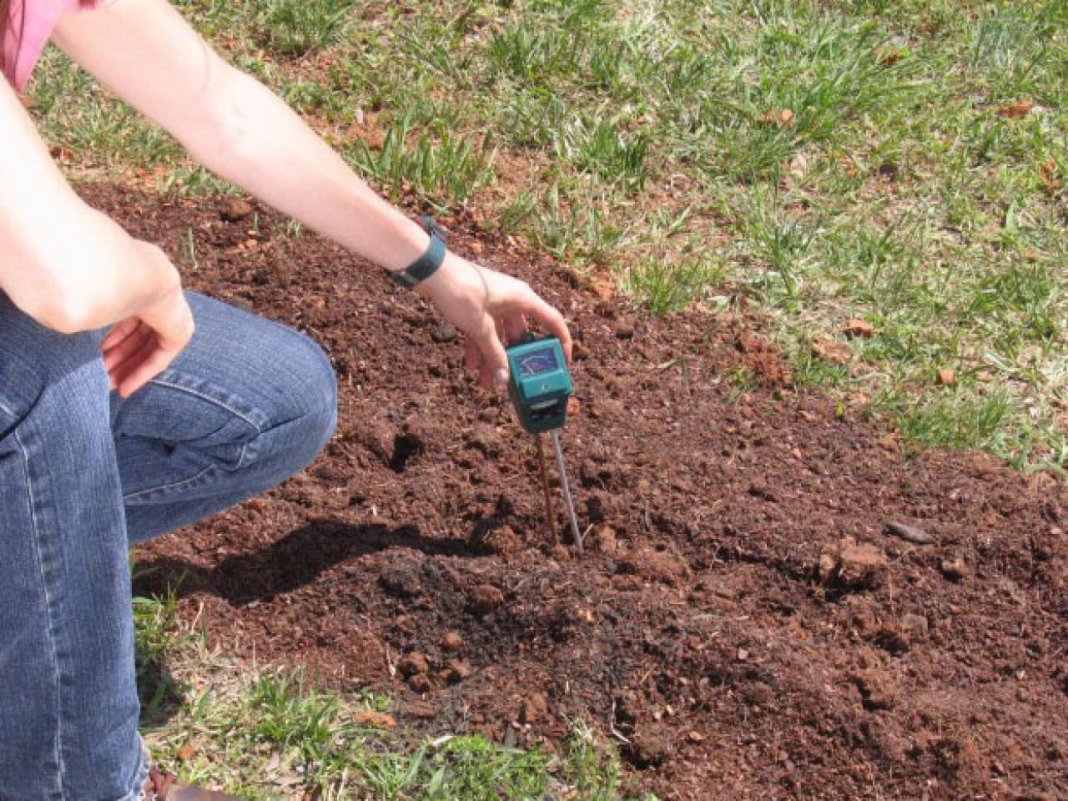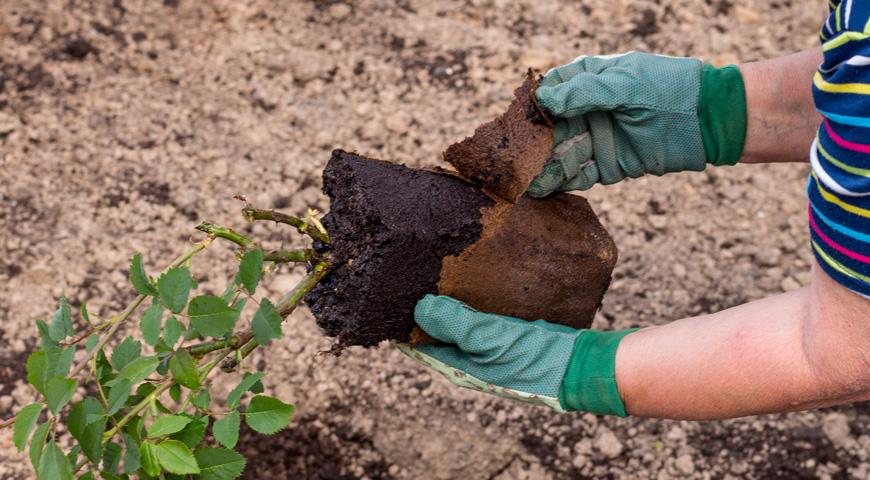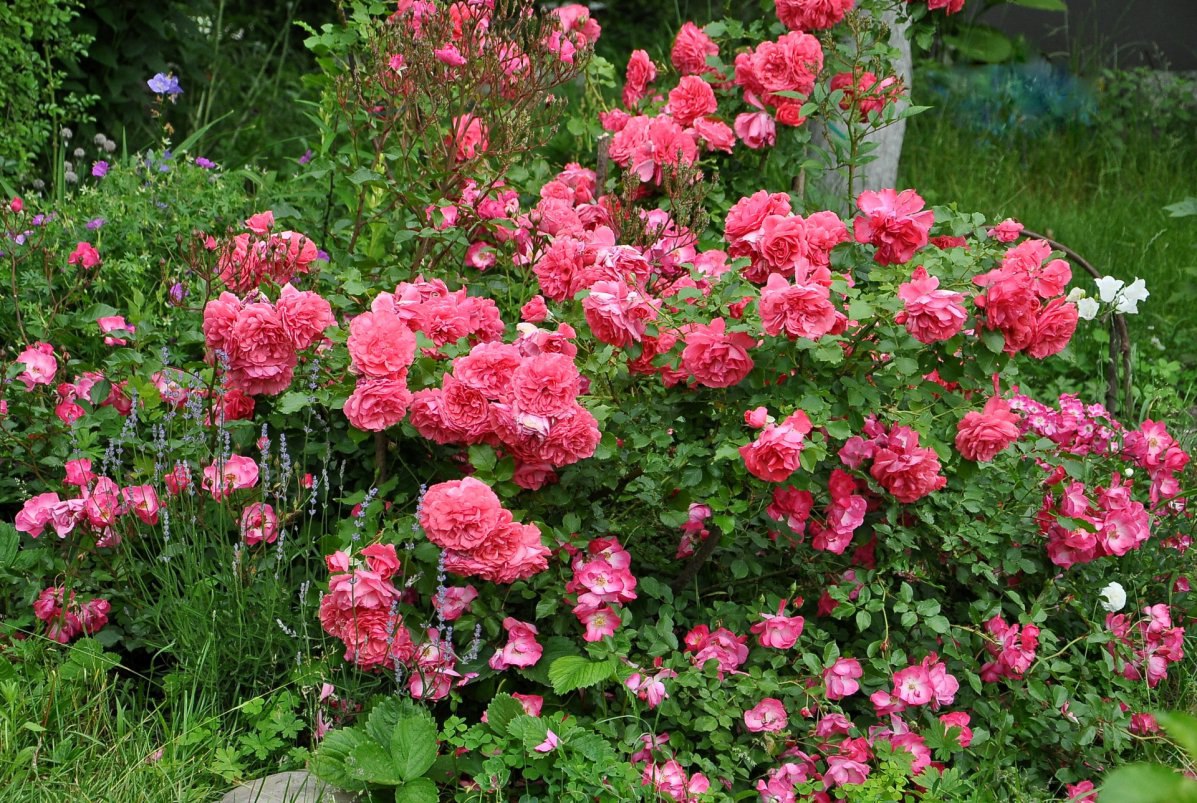Content:
It is impossible to imagine a summer cottage without roses. At least one bush of a luxurious beauty adorns a flower garden. It is not very difficult to grow a fragrant flower if the summer resident initially knows how to plant a rose, what place is suitable for it.
When to plant roses in open ground - in spring or autumn
Rose seedlings can be successfully planted throughout the warm season, but traditionally spring or autumn is chosen, the maximum number of seedlings goes on sale.
Timing and benefits of spring planting
Most retail chains start selling seedlings at the end of February, from which time gardeners are preparing to replenish their collection. But even in the south, this is not the right time to land. Purchased plants are stored until warm days in a cool place, waiting for suitable conditions:
the soil is completely free of snow, thawed; the air temperature does not drop below + 10 ° C for several days in a row; the weather forecast does not foretell the return of frost.
The advantages of spring planting are that over the summer the seedlings will form a strong root system that can withstand frosty winters without any problems, plus young shoots will have time to fully mature, the wood will not suffer from the cold.
Gardeners who choose spring bring another argument - easier care, no need to rack their brains over the advisability of watering.
Timing and benefits of autumn planting
The advantage of planting roses in autumn is more predictable weather, well-warmed soil, cool nights, which contribute to the rapid survival of seedlings. The next year, the bushes will bloom fully.
The generally accepted rule is that the last bush is planted no later than three weeks before the onset of the final cold weather. Another important point is that the night temperature should not be lower than + 10 °, the maximum daytime temperature should not be + 15 ° C. The flowering time of the planted varieties is also taken into account - the earlier the buds open, the earlier you need to plant a rose. The timing is considered optimal from the second decade of September to mid-October, in the southern regions the dates are shifted, planting there can be carried out until the first days of November.
Rules for planting roses in autumn with an open and closed root system
When planting roses, they adhere to the rules that guarantee normal rooting, wintering and further development of seedlings.
The choice of planting material
The most accurate assessment of the quality of a seedling is the condition of the root system. Fresh, firm roots, uniform color, no rot, weeping areas are the main criteria. The presence of at least three main shoots, an even green color with gloss, indicates a good condition of the seedling with an open root system (ACS).
Closed root system (CCS) means the seedling is sold in a container. In this case, pay attention to how tightly the soil adheres to the walls of the container.A moderately moist substrate, no gap, no unpleasant odor, leafy elastic shoots characterize a quality product.
Choosing a place on the site
Roses are chosen well-lit places, protected from winds, especially northern ones. The southern side of the rose garden should not be covered by buildings or high hedges, trees, shrubs.
It is desirable that the place was elevated for the rapid outflow of melt and rainwater and the separation of the roots from the aquifer of the soil.
Soil requirements: fertility, good aeration, weak acidity. Therefore, the place is selected taking into account what kind of soil the roses like in order to reduce the amount of additives introduced into it.
Technologically, planting bushes with open and closed root systems has differences, which will be discussed below.
Preparing for landing
Before planting a seedling, a number of preparatory work is carried out.
Preparing the beds
For spring planting, the beds are prepared in the pre-winter days, when the soil is still warm enough. In autumn - about a month before the start of planting, in August.
Nutrient substrate preparation
The soil from the holes is taken as the basis for the nutrient mixture. Components are added to it that improve its mechanical composition and increase fertility. Then the soil mixture is covered with a foil for better preservation until planting.
Refining additives:
- for loams - 3 parts of sand, one part each of compost and turf;
- for clay - 6 parts of coarse sand, leaf or turf soil - 1 part, compost, humus - one part each;
- for sandstones - two parts of sod land and loam, compost (humus) - 1 part.
If necessary, alkaline or acidifying additives are added to the soil mixture to bring the pH to 5.5-6.5.
You can use purchased specialized soil for roses to fill the planting holes.
Preparation of planting material
The process is carried out just before landing. They start with revising the shoots and trimming them - remove all dried, damaged ones, making a cut over the first bud. Further, healthy shoots are shortened depending on the planting time, the condition of the seedlings, and varietal accessory.
When planting in autumn, the strongest bushes are left with 5 buds on the shoot, average in strength and quality, 3 buds are enough, weak ones are shortened to 3-5 mm from the base.
Spring planting of roses requires rationing the number of buds:
- floribunda roses leave 3-4 buds;
- tea-hybrid group and polyanthus undersized - 2-3 pcs.;
- the length of the shoots of climbing roses of the Rambler group is left 35 cm;
- tall varieties are shortened by 10-15 cm;
- parked and miniature pruning is required.
For SCS seedlings, the roots are re-examined, the crumpled ones are trimmed, the healthy ones are pushed, immersed in the root formation stimulator for 3-4 hours. Immediately before placing in the hole, dipped in a mullein and clay mash (1: 3).
How to plant roses in open ground
The description of the process of how to plant roses includes the following steps:
- The planting hole is prepared in two weeks so that the soil has time to shrink. Sizes depend on the type: park - 90 × 90 cm, depth 70 cm; for the rest, 50 × 50 × 70 cm is enough, provided that the roots are placed freely.
- 5 cm of drainage material is laid out on the bottom - pebbles, broken brick
- Before placing the seedling in the hole, a mound is made at the bottom along which the roots will be directed.
- The seedling is immersed in a hole, the roots are straightened, the prepared soil mixture is gradually poured with the addition of superphosphate (two handfuls of dry fertilizer are needed for each hole).
- After planting, the bush is spilled abundantly with water. If the soil has settled heavily, add the required amount of soil.
- The trunk circle is mulched with dry peat, compost or hay. The organic layer will protect the root system from sudden temperature fluctuations and retain moisture.
The optimal scheme for group planting of bush roses: a gap of at least 40 cm between polyanthus, hybrid tea varieties are taken from 60 cm, park roses are planted at a distance of at least a meter from each other.
How to properly deepen the vaccination site
An important point when planting grafted roses is deepening the graft site. Experienced gardeners recommend deepening:
- in hybrid tea - by 3-5 cm;
- park - 5 cm;
- floribunda - 3-8 cm;
- climbing - by 8-10 cm.
The root neck of self-rooted roses is deepened by 3-5 cm.
Features of planting roses with a closed root system
Three types of root packaging are most common:
- Transparent plastic cylinders without bottom. Healthy roses are planted without destroying the earthy lump. If the roots are in doubt, the substrate is shaken off, the dry ones are removed, the mixed ones are straightened.
- Pots with peat substrate. Be sure to remove all shipping soil. At first glance, this contradicts the scientific canons, on the practical side - the roots tightly entwine the substrate, forming a "felt pillow". For further cultivation, the seedling is removed from the pot, dipped into the water along with the lump. When the peat is completely saturated with water, the outer part of the substrate is cut off with a sharp knife. Then the roots are washed, straightened.
- Net packing. In most cases, the manufacturer recommends planting without removing the roots from the net. However, gardeners, faced with the slow development of such roses, recommend cutting the net and only then planting it.
A place for planting roses in containers or packaging and planting holes are prepared according to the general rules, filled with prepared soil mixture, tamped, prepare a hole commensurate with an earthen coma. The depth is made so as to add another 3-5 cm of soil from above.
Planting a potted rose in the ground
Rose lovers often root cuttings of donated rose bouquets at home using various methods - potatoes, sand, light sphagnum-based substrates, etc. How to plant a rose grown in this way correctly - rooted cuttings are planted in open ground using the transshipment method. Since rooting took place in conditions close to ideal, any time is suitable for planting. The seat is prepared according to the general technology.
Sometimes rose seeds are used to replenish the collection. Seedlings are grown in pots for up to 2 years, then planted.
Features of planting roses in different regions
The climatic conditions of the area affect the timing of planting and the choice of suitable varieties. Less often, changes are made to the standard technology for planting seedlings.
In the Middle Lane and the Moscow Region, the Moscow Region, preference is given to spring planting due to unstable autumn weather. Two ways are practiced:
Cold start - bushes with an open root system are planted in cold, just thawed soil. At the same time, it is important that the seedlings are still in a dormant state.
Seedlings with a closed root system are planted after waiting for a steady heat. Young plants successfully take root throughout the season, the deadline for planting is mid-September.
The special climate of the Urals forces summer residents to navigate by temperature. In spring, roses are planted when the soil warms up to 8 °, in autumn they wait for the daytime air temperature at 4-7 °.
In Siberia, all planting work, regardless of the variety of roses, is carried out from May 15 to June 15. An important factor is that the air must warm up to + 10 ° C.
For the successful development and flowering of roses, it is very important to plant them correctly. If everything is done in due time, in full compliance with agrotechnical recommendations, luxurious flowers will decorate the garden in a short time.
